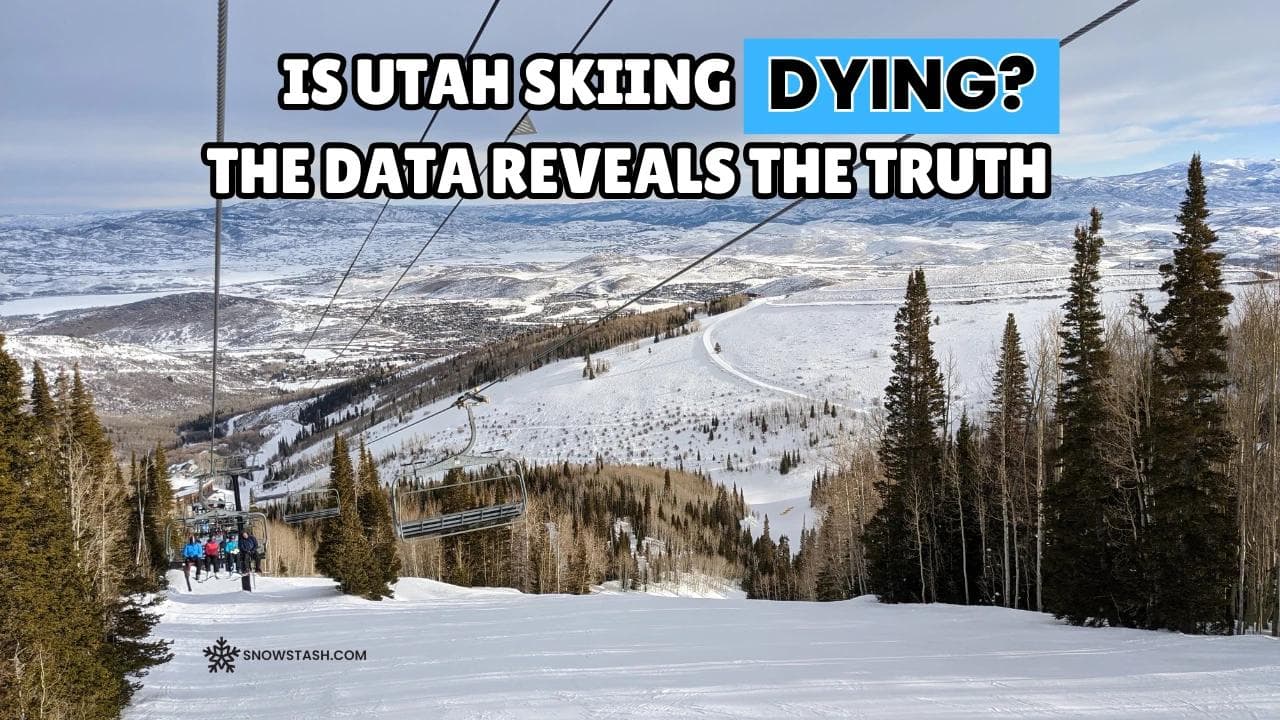
Utah Ski Season 2024-25: Third-Busiest Year Despite Visitor Decline
Published Date:
Categories
Utah Ski Resorts Record Third-Busiest Season Despite Visitor Decline
Utah's ski resorts welcomed 6.5 million visitors during the 2024-25 season, making it the third-busiest ski season in the state's history. However, this figure represents a 3.6% drop from the previous season, continuing a two-year decline from the record-breaking 2022-23 season.
The 15 ski resorts across Utah recorded 6,503,635 visits, down from 6.75 million the previous year. While still impressive, the numbers highlight growing challenges facing Utah's ski industry.
Weather and Conditions Impact Visitor Numbers
Utah experienced variable weather patterns throughout the season, with 538 inches of snowfall between November and April. This was slightly below the 44-year average of 548 inches, contributing to a slower start to the season compared to recent years.
The reduced snowfall contrasts sharply with the record 2022-23 season, when Alta received 903 inches of snow and perfect conditions attracted 7.1 million visitors statewide.
Why Utah's 'Third Best Season Ever' Is Actually Bad News
Park City Strike Affects Holiday Period
A significant factor in the visitor decline was the two-week ski patrol strike at Park City Mountain Resort during the busy Christmas and New Year period. The resort operated with just 18% of terrain open during this critical time, compared to 39% the previous year despite having 10 inches less snow.
Nathan Rafferty, CEO of Ski Utah, acknowledged the impact:
It's impossible to put a number to that, but also hard to believe that that didn't impact things in some way. They physically couldn't put as many people on their lifts as they could during a regular Christmas.
Economic Impact Shows Decline
Visitor spending also dropped to $2.51 billion from the previous season's $2.67 billion, suggesting skiers and riders are becoming more selective with their spending as lift ticket prices continue to rise.
Despite the decline, Utah's ski industry remains a major economic driver, supporting approximately 25,000 jobs across the state.
National Context Reveals Utah's Unique Position
Utah's decline comes during what was actually the second-busiest ski season nationally, with 61.5 million visits across all U.S. ski resorts. The Rocky Mountain region accounted for 42.9% of all national visits, highlighting the area's importance to American skiing.
This creates an interesting situation where the national industry is thriving while Utah, traditionally one of the strongest performers, shows signs of plateauing.
Major Infrastructure Investments Planned
Utah ski resorts aren't standing still. Over the next two years, at least 13 new lifts are planned across the state's ski areas, representing hundreds of millions of dollars in investment.
Deer Valley leads the expansion with nine new lifts and over 100 additional trails as part of its East Village development. Park City is installing a new gondola to replace the Sunrise chairlift at Canyons Village.
2034 Olympics Add Complexity
The upcoming 2034 Winter Olympics in Salt Lake City will boost Utah's global profile but may also create challenges. During the 2002 Olympics, regular visitor numbers actually decreased as Olympic events displaced typical skiers and riders.
However, the long-term impact of the 2002 Games was overwhelmingly positive, establishing Utah as a premier destination for snow sports.
Industry Faces Sustainability Questions
The consecutive years of declining visitor numbers, even from record highs, suggest Utah may be approaching natural limits for growth. Ski industry leaders must balance expansion with preserving the qualities that make Utah skiing special.
Staffing shortages throughout the season led to longer lift queues and reduced services, impacting the visitor experience despite significant infrastructure investments.
Looking Ahead to 2025-26
As Utah prepares for another season, the focus remains on managing growth sustainably. The planned infrastructure improvements aim to accommodate more visitors while maintaining the high-quality experience Utah ski resorts are known for.
Weather will continue to play a crucial role, with early and consistent snowfall being key to attracting visitors from around the world to Utah's renowned powder skiing.


